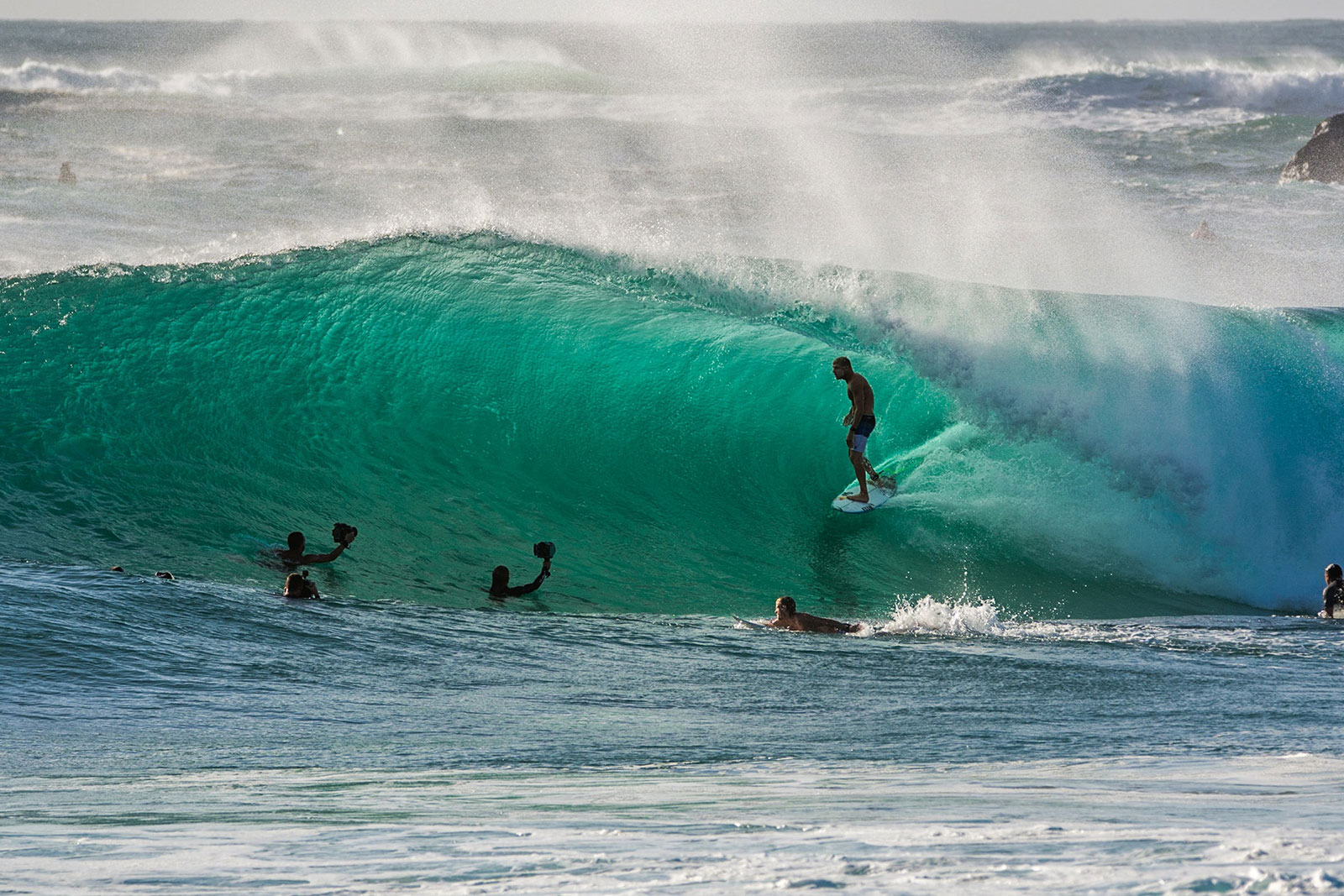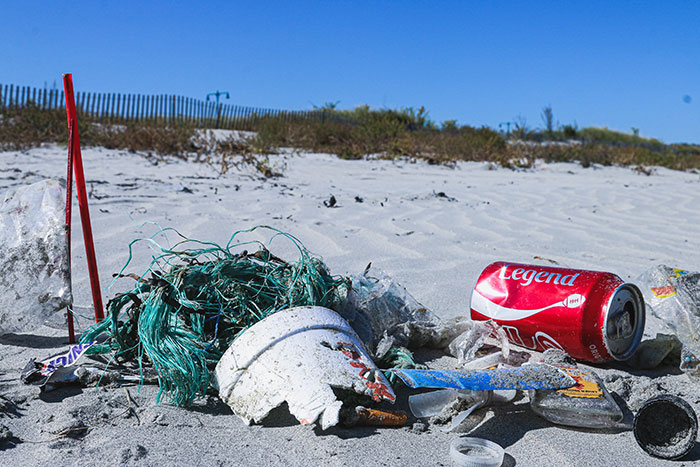How To Be a Sustainable Surfer? 7 Ways You Can Protect the Oceans

Gold Coast, Australia.
Sustainable Surfer – An Ocean Protection way
Our planet is seriously under threat, social and environmentally speaking. It is up to everyone. From governments and corporations of all sizes to regular citizens to stand up for the causes that resonate the most with us.
As ocean and beach lovers, surfers are no exception.
We believe, should even set the example when it comes to protecting the ocean and having a sustainable lifestyle.
1 – Mind your surf equipment and shop sustainable surfboards.
Depending on the elements that compose them, as well as where they are produced and how they are transported. Surfboards, leashes, waxes or surfboard bags all have their environmental and carbon impact. This means not all the products for sale are equally sustainable – some are more eco-friendly than others.
For instance, when it comes to energy consumption.
A shaper or a surfboard factory using renewable energy is likely more sustainable. More sustainable than one using energy from a fossil-fuel-based energy grid. Assuming the solar panels are used efficiently and disposed of responsibly.
Sustainable Surfer – An Ocean Protection way
Wood surfboards are also more eco-friendly.
If this wood comes from a forest that is managed responsibly (usually PEFC or FSC certified). Even better if the wood is sourced, transformed, manufactured and used locally.
The conclusion: surfboards made from renewable, recycled or and/or upcycled materials or others that reduce toxicity are also more eco-friendly.
So are you thinking about getting a new surfboard ?
Check where and how it is produced and what eco-friendly alternatives are out there.
Mind that there’s a new set of standards known as the Ecoboard Project that certifies surfboards as more eco-friendly than the norm.
Also, remember you can extend the lifecycle of someone’s surf gear.
Why not look for a (likely more affordable) second-hand surfboard?
If you are worried these eco (but also different and unknown) surfboards may affect your surf performance: don’t.
Mick Fanning says in the video below unless you’re in the top 1% you won’t feel a difference.
“If you’re not on tour, you should definitely be riding a sustainable surfboard”.
Where can I find this kind of sustainable, eco-friendly surf gear, you may be wondering. Here in the Algarve, Portugal, we greatly advise shopping at The Bunker Algarve.
2 – Wetsuits: sustainable and eco-friendly wetsuits

How important is it to get a planet-friendly wetsuit?
Very, since the wetsuits most commonly sold on the market today are made from neoprene – which is either made of drilled petroleum or mined limestone.
If you have a wetsuit and you didn’t carefully look at the materials making it. Yours most likely. Belongs to this category. And that’s ok!
Rather than leaving a – still in good shape wetsuit aside – the most sustainable and eco-friendly thing to do next is to use it for as long as you possibly can.
Repairing it whenever needed.
Doing this meaning extending this product’s lifecycle, and if everyone did it, I meant that less of them needed to be produced, hence, less pollution coming from (what you be a reduced) production.
Choose to repair and along the way you will also be either mastering the art of sewing or paying someone a few bucks to do it, strengthening the local community.
But when you indeed need to get a new wetsuit, there are some innovative companies selling more sustainable and eco-friendly wetsuits made of neoprene alternatives.
Most of these wetsuits are made from plant-based and chlorine-free rubbers such as Yulex (from Patagonia) or NaturalPrene.
When it comes to performance most are equally good or better – there is only one downside: price. Which is always the problem when the market is still a small one.
But if you can afford to pay 10-15% more, you’ll be helping the market to grow.
Eventually, with time and more consumers entering the market, costs and price will come down.
3 – Sustainable surf wax and sunscreen
Did you know surf wax is mostly the product of hazardous petrochemicals that are fossil-fuel-based?
Once these toxic chemicals get to move from the surfboard to the water they are harmful for oceans – polluting marine ecosystems and damaging reefs.
But there’s a better way. New, more natural and organic ingredients are showing up and they look like a very interesting alternative. For instance beeswax is 100% natural and contains no harmful additives.
At the same time, sunscreens are also something to keep in mind since they also contain harmful chemicals – such as octinoxate and oxybenzone – that leave marine ecosystems, in danger.
How’s so? Because naturally, sunscreens tend to wash off and end up being dissolved into the water. Harming reefs and fish species.
So the next time you are getting a new sunscreen, make it is not made of these harmful chemicals. If it is ethically-produced, palm-oil free and comes in a plastic-free plastic packaging even better.
At Future Eco Surfing School we’re proud to partner with Eqlove .
Eqlove is a certified organic cosmetics and wellness brands inspired by surfing.
4 – Be sustainable by minimizing the impact of your surf travels
Now that we know that being a sustainable surfer includes being mindful of our surf gear, the next obvious thing to look at is the pollution surfers cause when we go surfing.
John John, says that not everyone has the privilege of living a few steps away from a dream wave!
Sustainable Surfer – An Ocean Protection way
The thing is: almost everyone needs some kind of transportation to get to the ocean.
If you think the recent fly shame trend started by Greta Thunberg is not something to be worried about because you actually don’t fly much, you better check youmatter’s piece comparing plane and car pollution.
Put shortly, it states that unless you are taking 3 other people in the car (for thermal cars).
Driving can be as polluting as flying.
What’s the alternative then?
Well, either you join a local WhatsApp or Facebook carpooling group (or start one if there is none) or (if it is doable) you can always go by bike or motorbike.
Public transportation, especially trains and buses, may perhaps be an option too?
Despite all this, of course we all want to travel the world and surf the world’s best breaks – keep going after them!
Just try to find a healthy balance in how you travel: perhaps you can surf abroad every other year while surfing at home in between. Or perhaps you can make Indonesia and Australia in one trip, rather than crossing the world twice within a short period of time.
In the worst-case scenario, remember you can always offset your emissions. Put shortly, this means investing in projects that help store the atmospheric carbon you emit.
Some common examples of carbon offsetting include soil regeneration projects.
They often store more carbon than trees, planting autochtone (local) trees or installing solar panels in underdeveloped villages.
5 – Avoid plastic pollution: be sustainable and help protect the oceans

Being a sustainable surfer goes beyond surf itself.
Besides keeping up with the basics – not throwing trash away (including cigarette butts), taking our reusable bags when we go shopping, carrying around our water bottles and recycling whenever and wherever possible.
There are way more sustainable changes a sustainable surfer needs to worry about.
If you give Bea Johnson’s – one of the first and most influential personalities of the zero-waste lifestyle movement – zero waste home a quick read, you understand there is way more we can do. You see, a few R’s come before recycling.
First, we should refuse the things we don’t need (like free samples or flyers) and reduce what we do buy to what is truly essential, adopting a more minimalist lifestyle.
Besides, we should always try to reuse the things we own it for as long as we possibly can, repairing them whenever they get broken or damaged. And only then after that should we rot what’s biodegradable or recycle what’s not.
Sustainable Surfer – An Ocean Protection way
Choosing clothes that are made from natural fabrics.
Such as cotton (even better if it is organic) instead of those made from microplastic fibres (such as nylon, polyester or acrylic).
Plus, as we’ve been before, purchasing from small and local producers helps not only the environment but also the local economy.
Remember the bulk shop? There’s a really nice one here in Portimão, Algarve, Portugal, known as Armazém Integral – give them a try!
There are also some easy and cheap things we can do differently when it comes to plastic.
We can take our own reusable veggies/fruits bags (plastic or fabrics) when we go shopping and shop in bulk shops. So we can refill our supplies of commodities such as oil, sugar, rice, lentils or laundry detergent. Use solid bath and shampoo soap (avoiding plastic packaging) and bamboo toothbrushes.
6 – Take part or organise beach cleanups and protect the ocean from plastic pollution
If you get your friends and family to take a (reusable, even a small) plastic bag with them every time they go to the beach.
Encourage them to go for a healthy beach walk grabbing the plastic they come across, that’s already a great win.
But taking part in an organised beach cleanup is a whole different story. Not only you get to know new people who share the same ocean protection values, strengthening your community ties.
You are also in close contact with the ocean and dedicating your time and attention to prevent other species – from whales and dolphins to fish, birds to crustaceans – from getting hurt and potentially dying.
That feeling that you are contributing to the greater good that we are all wired to contribute towards (including terrorists – you’ll be amazed by Rutger Bregman’s book Humankind: a hopeful story) is definitely worth it.
7 – Support local and global organizations working to protect the ocean

Despite all the important and valuable changes we can do in our lifestyles to live a more sustainable life and protect the ocean, there are causes needing urgent attention and dedicated professionals in different fields.
That’s why supporting (either financially or with your time and expertise) NGOs – especially local and national ones – helps you have a broader and more immediate impact.
So why not support those networks working hard and sometimes against powerful interests with their work?
There is likely a national Surfrider Foundation, a WWF team or another organisation close to where you live. They are doing relevant work – be it in protecting the ocean or other common natural treasures. Help them out!
Here in Portugal, we are lucky to have ANP/WWF team who helps protect our ocean, forest, water and climate.
But there other movements like Zero, Geota, LNP and many others doing a great job too – and becoming associate costs as little as 5-10eur/year.
Check out our sustainability plan here.
[Image credits to Brandon Compagn, Austin Neill, Claudio Schwarz and Tyler Nix on Unsplash]



